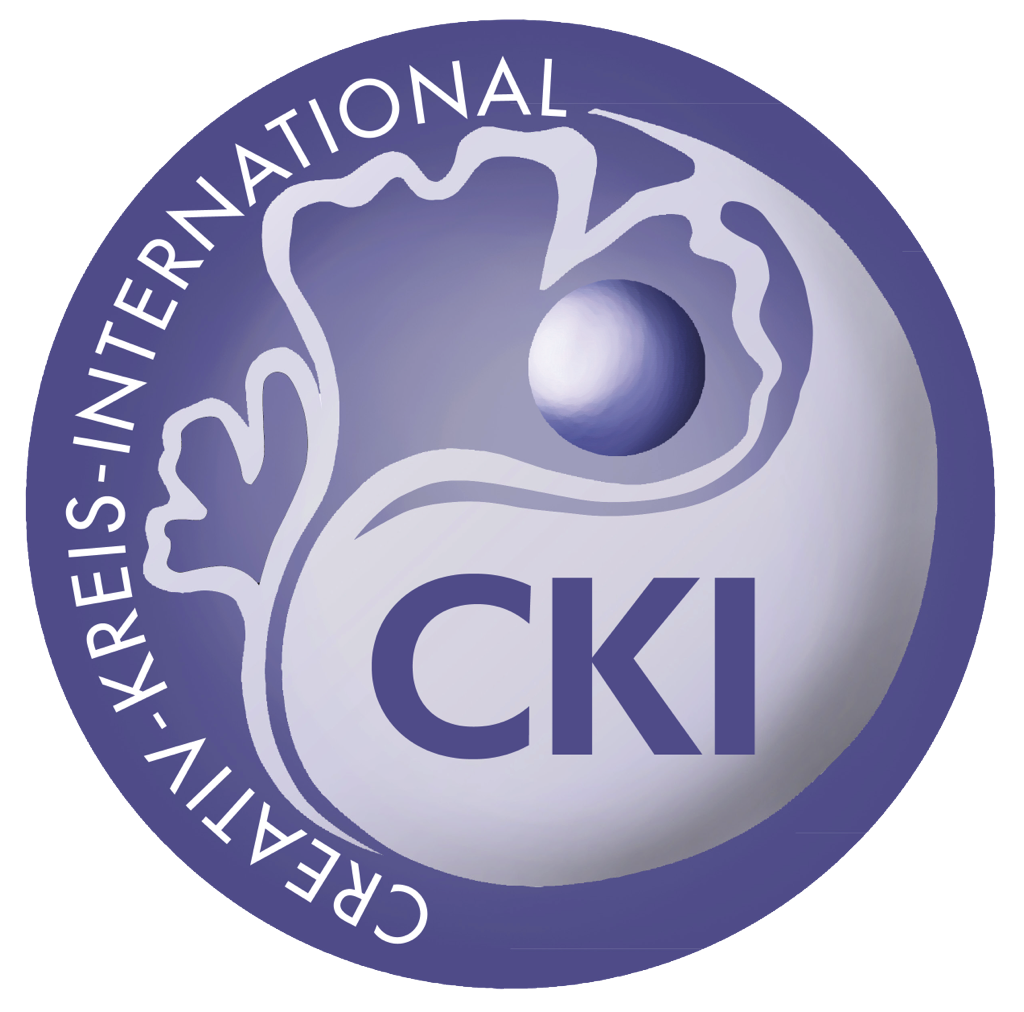Enamel is a material that comes in hundreds of brilliant colours, that was used thousands of years ago and is still up-to-date and that can be used to create unique jewelry, art, as well as articles of dayily use.
What is enamel?
“Enamel” is ground glass that is melted onto metal at a temperature above 700° C. The glas melt can be transparent, opal or opaque.
Base material are metals such as gold, silver, copper, tombac or even steel and stainless steel.
The combination of glass on metal is tremendously colour-intensive and expressive, the colours are burned in and do not fade. Through artistic work in a wide variety of techniques, a wide variety of artworks is created.
We’re talking/writing about “fire enamel”, whereas “cold enamel” are resins or lacquers that are not fired at high temperature.
In German, there’s a slight difference between enamel used for industrially produced articles of daily use which is called “Emaille” (better known in Germany) and enameled art objects which are called “Email”.
History of enamel
The art of enameling has been known for a long time. The Egyptians gave their dead enameled jewelry in the grave and the Celts cultivated it as an object of exchange. The first known enamel work is a grave find from Mycenae that is about 3,500 years old. In the Middle Ages, enamel experienced a heyday and was used in treasure and goldsmith art, as well as in church art.
After a decrease of enamel art in the 18th century, it regained importance in Europe in the 19th century, first as church art and later on for decorative purposes. During industrialization, enamel also gained industrial use, not only for decorative purposes, but especially as a long-lasting and durable protective coating.
Today, enamel is widely used in Europe (including France, Germany, the Netherlands, Russia), Asia (Japan, China, India) and all over the world.
Jewelry enamel
Making jewelry enamel
Jewelry enamel consists of 34% borax, 28% feldspar, 5% fluorite, 20% quartz, 6% soda ash, 5% sodium nitrate and 0.5 to 1.5% each of iron, cobalt, nickel, gold and antimony oxide. These substances are finely ground and melted. The red-hot melt is poured into water and the resulting granular glassy frit is ground again. The final product is a dry enamel powder.
Some enamel techniques
Cloisonné
In Cloisonné, flat wires bent into shape are placed on a metal plate and fixed. The cells created between the wires are filled with enamel.
Champlevé
In Champlevé, pits are made in a thick plate by engraving, etching, scraping or other processes. Those pits are filled with enamel. Alternatively, two metal plates can be fixed on top of each other, with a motif sawn out of the upper one.
Basse Taillé is resembles Champlevé, whereby the pits are not created evenly deep, but are worked out in relief.
Enamel painting
In enamel painting, there are no frames to separate the enamel colours, but they are painted freely onto a metal plate. For this purpose, the enamel powder is mixed with adhesive and, if necessary, distilled water and thus liquefied. Depending on the type of material used, the colours may run more or less into each other.
Besides painting, the enamel powder can also be simply sprinkled on.
Airbrush
Airbrush is a fairly new technique of enameling. The enamel powder is mixed with adhesive and water and quite strongly liquefied and sprayed onto a metal plate with the help of a compressor.
Window enamel
In window enamel, either wires are soldered together or a motif pattern is sawn out of a metal plate, thus forming a kind of framework into whose spaces the enamel is filled. Mica is used to hold the enamel in place during filling and firing. It does not bond with the enamel and can be removed again after firing, so that the enamel is only held laterally by the wires. Depending on the material used, window enamel is more or less translucent and resembles coloured glass windows in effect.
Boday enamel
For the body enamel, a sculptural figure is first chased from thin sheet metal and then decorated with a layer of enamel.
Industrial enamel
Making industrial enamel
The basic material for industrial enamel is also the so-called frit. However, 30 to 40% water, clay and quartz powder are added during grinding. The end product is a wet/moist enamel slip that has to stand for a few days before it can be used further. Due to the clay it contains, industrial enamel is always opaque.
Industrial enamel in everyday live
Industrial enamel is used as a particularly durable, corrosion-, acid- and temperature-resistant, as well as impact-, shock- and scratch-resistant material in numerous areas of everyday life.
Well-known from “grandma’s kitchen” are the enameled pots, pans and dishes which are currently enjoying great popularity again. In addition, there are the so-called “white goods”, products for the household such as stoves, washing machines or refrigerators, but also sanitary articles such as bathtubs. The term has its origin in the color white, which was classically used for such products.
But also outside the household industrial enamel is used in many ways, for example as durable signs or even as wall panels in subway stations.
Industrial enamel in art
Industrial enamel is also becoming increasingly popular in art. Since industrial enamel is always liquid/creamy, especially the techniques of enamel painting and airbrush are used, i.e. it is painted or sprayed. Preferably, industrial enamel is used to work with large steel plates or to transform old enamel utensils into artworks.
